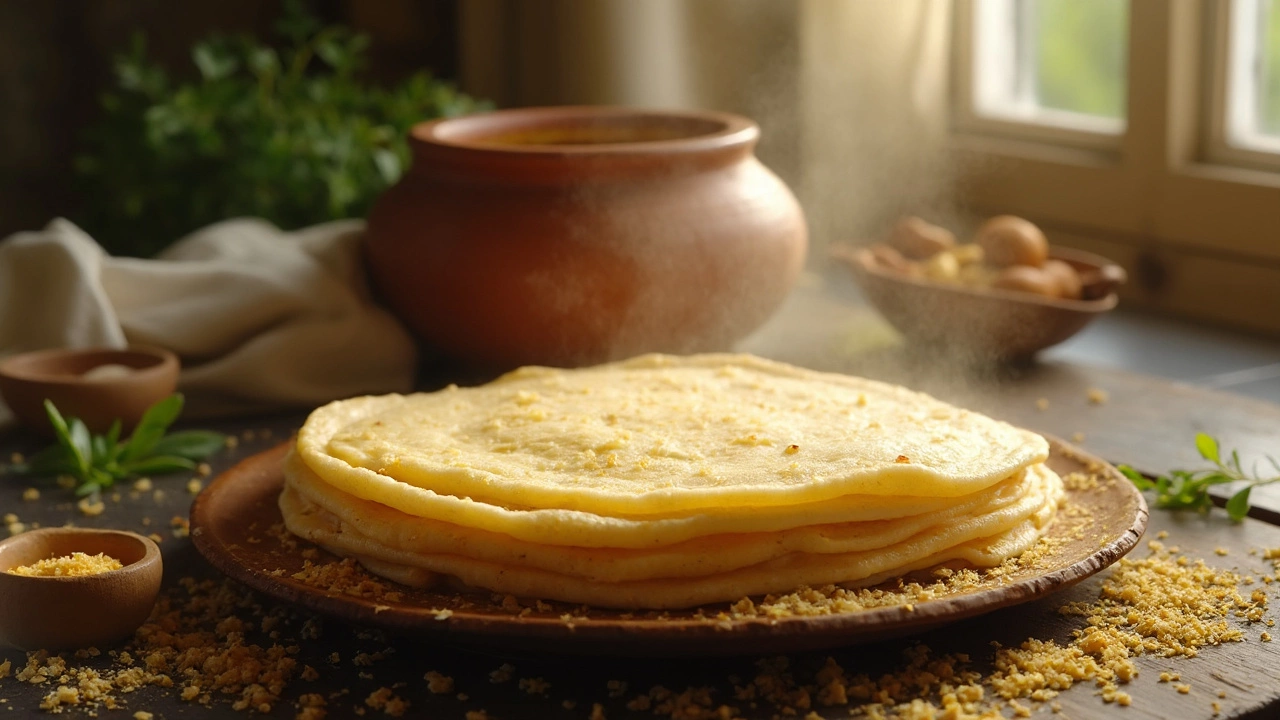Speed Up Dosa Batter Fermentation Naturally
 Feb, 12 2025
Feb, 12 2025
If you've ever found yourself impatiently waiting for your dosa batter to ferment, you're not alone. Fermenting batter without yeast might seem slow, but there are a few tricks to speed things up. The key is understanding what your batter needs to thrive.
Warmth is your friend. Keeping the batter in a cozy spot can work wonders. Think about placing it in the oven with just the light on or near the stove—anywhere warmer than room temp. This helps the natural microorganisms do their job faster.
But temperature isn't everything. The ingredients you use can significantly impact the fermentation speed, too. Including a little bit of fenugreek seeds not only adds to the batter's flavor but also kicks in the fermentation earlier. It's like giving your batter a head start.
- Ideal Conditions for Fermentation
- Speeding Up the Process
- Role of Ingredients
- Common Mistakes to Avoid
Ideal Conditions for Fermentation
Getting the right conditions for fermenting your dosa batter is crucial if you want to achieve that perfect blend of tanginess and fluffiness. Let's break it down into what really matters.
Temperature Matters
Fermentation is all about warmth. The natural microorganisms in the batter thrive at around 30-35°C (86-95°F). If your kitchen doesn't naturally reach these temperatures, consider some hacks. Placing the bowl inside a slightly pre-warmed oven or near a warm appliance can help speed up the process.
Choose the Right Vessel
The type of container you ferment your batter in can make a difference. A glass or ceramic bowl is better for maintaining a steady temperature. Avoid metal bowls as they can react with the batter.
Humidity Levels
Humidity plays a subtle but significant role. A slightly damp cloth over the batter helps maintain moisture levels, allowing for even fermentation.
Timing Is Key
Patience is vital, but knowing when to wait can be tricky. Typically, 8-12 hours should do the trick, but this varies based on climate and ingredient specifics.
For visual learners, here’s a quick glance at temperatures and times that work best for quick dosa batter fermentation:
| Climate | Temperature (°C) | Approx. Time |
|---|---|---|
| Hot & Humid | 30-35 | 8-10 Hours |
| Cool & Dry | 20-25 | 12-15 Hours |
Speeding Up the Process
If you've got a craving for dosas, waiting for the batter to ferment can test your patience. But don't worry, there are several techniques to get things moving faster. Let's dig into how you can naturally speed up dosa batter fermentation.
Use the Right Temperature
Temperature is crucial when fermenting dosa batter. The warmer the environment, the happier your batter’s microorganisms will be. Consider these spots:
- Inside your oven with just the light on
- Near the stove or a heated appliance
- On a kitchen countertop that's away from drafts
By ensuring a warm environment, you're inviting the natural fermenting agents to work efficiently, reducing the time needed.
Boost with Fenugreek Seeds
Fenugreek seeds do wonders beyond just taste. They're like little power-ups for your batter. When soaked and ground with rice, they produce natural bacteria that kick-start fermentation. Just add a teaspoon of these seeds, and you're good to go.
Consistency Matters
The thickness of your batter can also impact fermentation time. Not too thick, not too thin—aim for a yogurt-like consistency. This allows the ferment-friendly organisms to move easily, spreading their effects evenly through the batter.
Covering and Containers
Using the right container and covering it properly makes a difference. Opt for stainless steel or glass containers for best results. And when covering, use a lid or plastic wrap—it should be snug but not airtight, allowing the gases from fermentation to escape.
By following these steps, you won’t only experience quicker fermentation but also achieve that ideal tangy flavor we're all after. No yeast, just nature and a little help from you!

Role of Ingredients
When it comes to fermenting dosa batter, the ingredients are your secret weapon. Each one plays a role in how quick and successful the fermentation process will be. Let's dig into what you need.
Rice and Lentils Combination
The standard mix for dosa batter is rice and urad dal. Rice provides the structure, while urad dal brings in the creaminess and helps the batter to ferment well because it's naturally high in protein. Using a 3:1 ratio of rice to urad dal is recommended for the perfect texture.
The Power of Fenugreek Seeds
You can't overlook the power of fenugreek seeds. Just a small spoonful can supercharge the batter's ability to ferment. They not only aid fermentation but also introduce a subtle, pleasant flavor. It's a simple addition that makes a noticeable difference.
Water Matters
Water isn't just there to combine everything; its quality impacts fermentation. Use filtered water if possible. Tap water, especially if it’s chlorinated, can hinder the natural fermentation by affecting the growth of the good bacteria.
Soaking and Grinding
Don't rush the soaking process; give it at least 6-8 hours. It softens the grains which is crucial for a smooth batter. When you're grinding, aim for a fluffy texture. A thick, smooth batter holds air better, which is essential for good fermentation.
Temperature Impact
As already mentioned, temperature boosts fermentation. But even your choice of ingredients can help. Using slightly warm water while grinding can give that extra nudge to the bacteria. It's like waking them up with a gentle morning call.
In essence, understanding and choosing ingredients wisely can make the difference between a batter that takes its own sweet time and one that's ready to deliver those crispy delights in record time!
Common Mistakes to Avoid
Making dosa batter can feel like a science project gone wrong if your batter isn’t fermenting just right. Let’s steer clear of some common pitfalls to make sure it’s smooth sailing next time.
Using Cold Water
One of the biggest goofs is using cold water in the batter. Cold water slows down fermentation, making it harder to achieve that fluffy texture. Always use warm water to mix your ingredients. It gives those natural microorganisms a friendly environment to get going.
Ignoring the Environment
Another blunder is not considering the room temperature. If you leave your batter in a cool or cold place, expect a long wait. Find a cozy spot in your kitchen to speed up the process. Pro tip: In cold weather, some folks even wrap the bowl in a blanket!
Skipping Fenugreek Seeds
Ignoring the magic of fenugreek seeds is a missed opportunity. These little guys are champions at boosting fermentation. Even just a small amount can make a big difference. Plus, they add a delightful flavor note to your dosa.
Too Salty, Too Soon
Lastly, don’t be hasty with the salt. Adding salt before fermentation can slow down the process. Wait until after the batter is nicely fermented to stir in the salt.
Avoid these mistakes, and you’ll be well on your way to crafting the perfect, tangy dosa. Who knew it could be so simple?